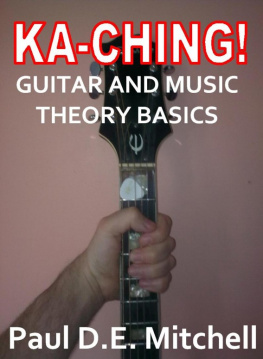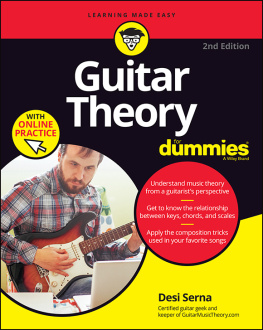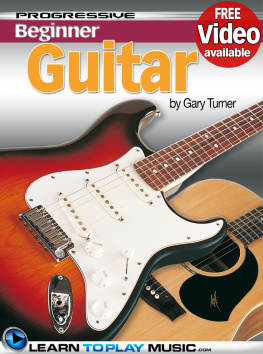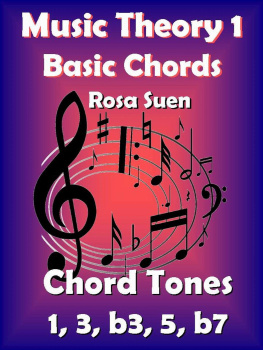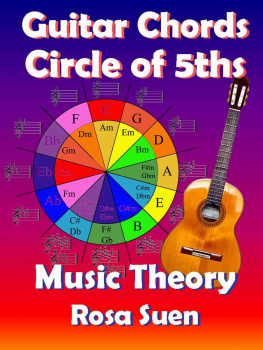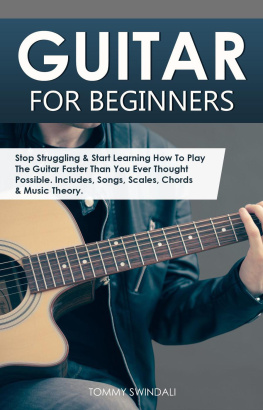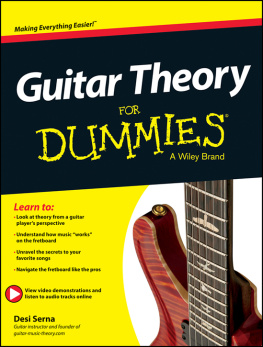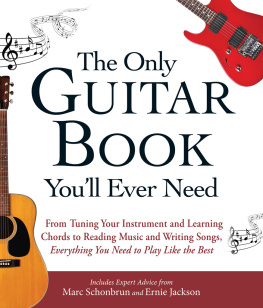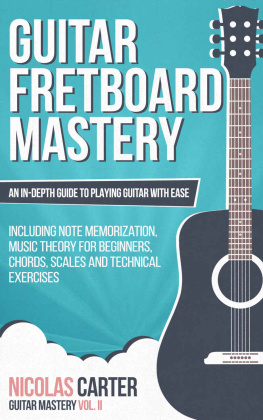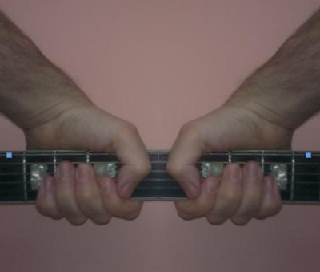KA-CHING - GUITARBASICS
SmashwordsEdition
Paul D.E.Mitchell 2011
Published by:Paul D.E. Mitchell
For MatthewDunn
All rights reserved. No part of this ebook may be reproduced,stored in any retrieval system, or transmitted in any form or byany means, electronic, mechanical, photocopying, recording orotherwise outside of the publishers contract and the licensingterms and conditions as agreed with Smashwords without the priorpermission of the publisher. This ebook is licensed for yourpersonal enjoyment only. This ebook may not be re-sold or givenaway to other people. If you would like to share this book withanother person, please purchase an additional copy for eachrecipient. If youre reading this book and did not purchase it, orit was not purchased for your use only, then please return toSmashwords.com and purchase your own copy.
Thank youfor respecting the hard work of this author.
Chapter 01: BasicBasics
When I beganlearning I could not find a single book like this that began withabsolute basics and went on to explain chords and musictheory behind it in a clear and concise manner. I had no access toa piano just a beat-up Epiphone and a tuning fork so I decided toconstruct this book around playing and listening exercises on theguitar adding chord shapes only when needed to progress thedevelopment of the music theory. This book will not teach you towrite scores nor reproduce guitar riffs using tablature but at theend of it you will be able to construct and analyse chordsprogressions and have a thorough understand of the songwritersart.
~~~~~
The only thingI cant do for you is tune your guitar strings to the standardtuning of E-A-D-G-B-E! If youre a beginner with no assistance orpeers, buy a guitar tuner and seek advice otherwise you will not beable to tune the guitar properly and benefit from the book. Thoseof us not gifted with perfect pitch (the natural ability torecognise a frequency without reference) cant always tell if wevehit the right open string frequency. Even a slight off-tune willmake everything you play sound not quite right or terrible so if indoubt - use a gizmo!
~~~~~
If yourebuying a guitar to learn on, ALWAYS seek advice on how to buy adecent inexpensive guitar. I was given a shitty dirt-cheapKay acoustic guitar as a kid and ended up convinced I would neverbe able to play when Id have had more luck with a cigar box andsix elastic bands. It was years before I realised my mistake. Thereis absolutely no point spending a grand on a guitar eitherif youre not going to see the basics through the only guy whobenefits is your pawn-broker. You will also find computer programslike Noteworthy a huge help!
~~~~~
Lets begin thefundamentals with your fretboard. Im assuming you have the basicgrasp of physics that tells you that when you shorten a string itvibrates faster when plucked and so its frequency which wemusicians refer to as PITCH - rises. Each fret raises thepitch of each string by a set mathematical ratio we refer to as aSEMITONE. Repeat and burn into cortex: each fret is asemitone! Now add to the grey matter the fact that thedifference in pitch between any pair of semitones is calledan INTERVAL. Do not proceed until you grasp thedefinitions of these three basic concepts!
~~~~~
I want you tostart on the open bass E-string and then play every semitone up tothe twelfth fret. You will notice that there is little musicalinformation from this exercise other than the pitch rises bysemitone intervals. I want you to listen tothose semitones and then play the twelfth fret and the open stringseveral times. Now repeat the exercise for all six strings - Iknow its obvious but I want you to learn to LISTEN as wellas PLAY straight off the bat as its much harder to unlearn badhabits later. It is not a bad idea to repeat the exercise and SINGeach semitone as you go to see if you can match the pitch as youllbegin to train your pitch perception.
~~~~~
Youll hearthat the pitch of the 12th fret semitone ishigher than the open string but it still sounds thesame and the same applies to the other five strings. If you reallyare a newbie, then you should be going huh, oh yeah! atthis point. Now look at the position of the 12th fret inrelation to the nut or open fret and the ridge of the bridge.Measure it with a tape measure and youll find that the12th fret is exactly in the middle. When you holddown the string at this fret and pluck the string it will vibrateat DOUBLE the frequency of the open string.
~~~~~
Half thestring-length equals twice the frequency; a quarter-lengthdoubles the frequency again and so on. There are hundred of webarticles on the relationship between frequencies and string-lengthson the internet but this all you need to know for now.
~~~~~
Now write thisin marker pen on your hand: the frequency difference or interval oftwelve semitones between an open string and a 12thfretted string is known as an OCTAVE. Each octave iscomprised of 12 semitones. But why does doubling orhalving the frequency to create octave intervals not change the wayyou perceive the musical value of both pitches?
~~~~~
Play the openand 12th fretted E bass string and sing the two pitchesif you can to appreciate this point. The physics will be explainedlater. The open E string presents a musical value oridentity to your ear called a NOTE - an E to statethe obvious. Doubling the frequency of a note does notchange its musical identity to your ear which means that the pitchof the semitone on the 12th fret is an octave higherbut it is still an E! Even if the note is buried in acomplex chord or melody you will still recognise that Eregardless of its pitch!
~~~~~
Repeat playingeach open string and its 12th fret to get theseimportant points: (1) Semitones are the physical differencesin pitch (separated by frets) and 12 comprise an octave (2) themusical identity or note of a pair of semitonesseparated by an octave (a doubling of frequency) is the same thus(3) a note is not the same concept as a semitone toreally labour the point! Why are they calledsemitones and not tones? See later!
~~~~~
I know youmight find my insistence on this a little wearying but youhave to appreciate and listen to the difference between eachsemitone and understand what an octave is before progressing toproperly grasp the fundamentals of how semitones make music.
~~~~~
Before I droneon about the physics of the inner ear Ill start you off with thehands-on physics of playing chords so that you can alternatebetween practice and study as you plough through the book. There isno magic to this exercise which will last the rest of your musicallife. You have got to press the strings down hard immediatelybehind each fret or all you will hear is a soul-crushing dull thudinstead of a soaring six-string orchestra in full voice. Deepridges will form in your unhardened fingertips and youllexperience pain but this is your Mister T moment - toughen the tipsby practising an HOUR a day forming these chords one at a time andthen try moving from one to the other in every paircombination you can think of. I cannot stress enough that you

